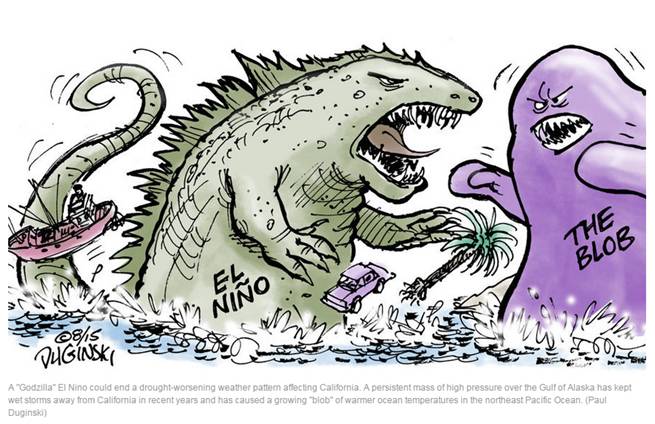Last week I compared hurricane history with the current (at the time) forecast. There were a few storms of potential interest, including Erika and Ignacio. Well, here’s what really happened:
Flood Models are Biased, Because They are Models. But that's OK!
Posted by Ivan Maddox on Sep 1, 2015 10:44:00 AM
What? Flood models are biased?
Topics: Flood Modeling, Flood Risk, Risk Models, Risk Scoring
Memory vs. History: Underwriting Hurricane Needs the Long View
Posted by Ivan Maddox on Aug 27, 2015 11:32:00 AM
Recently I’ve been researching where hurricanes have historically made landfall in the southeastern United States, and I have found little nuggets of wisdom that help drive underwriting in Florida. The variability of the frequency of hurricane strikes along the coast is surprising. Some places get nailed a lot, and some rarely get hit.
Topics: Flood Insurance, Insurance Underwriting, Hurricane, Private Flood
Are Insurers Ready for a Visit from the 'King of Monsters'?
Posted by Ivan Maddox on Aug 26, 2015 8:35:00 AM
Godzilla is coming! In the past 10 days or so, the impending El Niño has been universally dubbed “Godzilla” because it is being forecast as the largest (or almost largest) such event in 50 years or more.
Headline writers love it:
- El Niño fascination grows colorful: It's turbulent, massive, Godzilla-like and even 'Bruce Lee' - The Oregonian
- Will ‘Godzilla’ El Nino terrorize KC this winter? Forecasters and Farmer’s Almanac disagree - The Kansas City Star
- Will ‘Godzilla El Niño’ Terrorize Colorado This Winter? - CBS Denver
- Shark Encounters Increase as El Nino Approaches - SFGate (this one deserves a link)
- What happens when ‘the blob’ meets Godzilla El Niño? Climate chaos and more hot, dry weather for B.C. - Canada’s National Post
The Global Language Monitor has added a new usage of “Godzilla” to the English Language Lexicon because of all this, and Your Dictionary has added a second definition to their Godzilla entry. To give credit where it’s due, here is Bill Patzert at NASA’s Jet Propulsion Laboratory who appears to have coined the phrase.
The coverage is very much focused on what types of weather we can expect in the autumn and winter from this year’s El Niño. Speculation is rampant on what California will experience, and almost every city in North America has a local look on what might be coming. Floods, droughts, warmer weather, colder weather, blizzards – it’s all there, depending in where you look on the continent. And it’s all reasonable…at least as reasonable as anything described as “Godzilla” can be.
Topics: Wildfire
New Madrid vs. Cascadia: Is There a Lesser of Two Evils?
Posted by Ivan Maddox on Aug 20, 2015 10:24:25 AM
A few weeks ago, I wrote about the New Madrid seismic zone, including how an earthquake there would be the costliest natural disaster in the country’s history. In those two weeks, the readership of that blog post has been enormous (thanks to Iain Bailey at Swiss Re for the original article!), and along with it came many questions and comments that mention the Cascadia subduction zone. So, let’s explore that seismic time bomb, including a comparison with New Madrid.
Until the 70s and 80s, the Cascadia subduction zone was unknown to science. Thanks to a July 2015 article in the New Yorker by Kathryn Schulz, it now has a high profile in the public consciousness. The article recounts the scientific detective story around its discovery, and describes the potential destruction to be wrought when (not if) the earthquake comes. It’s a fantastic – and very scary – article, and it has made the rounds of social and traditional media.
What are the similarities between the two seismic zones? Not much, beyond their shared potential for devastation (human and economic) of large populations.
The differences are more interesting.
Topics: Flood Insurance, Earthquake





